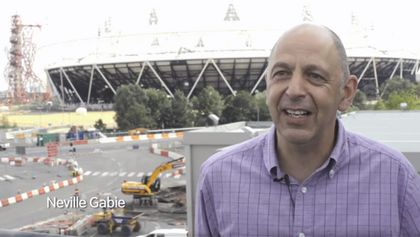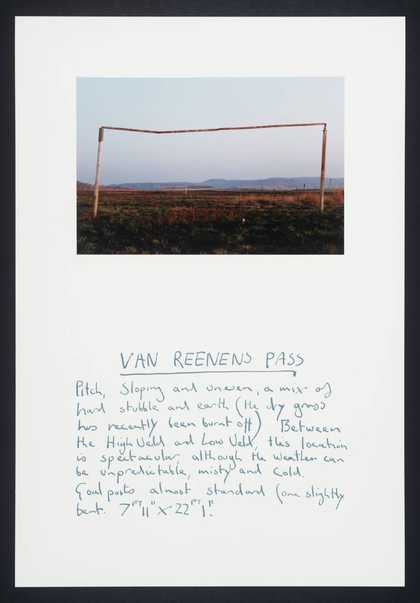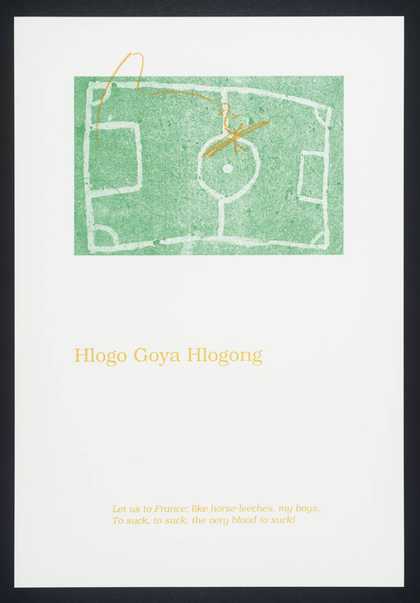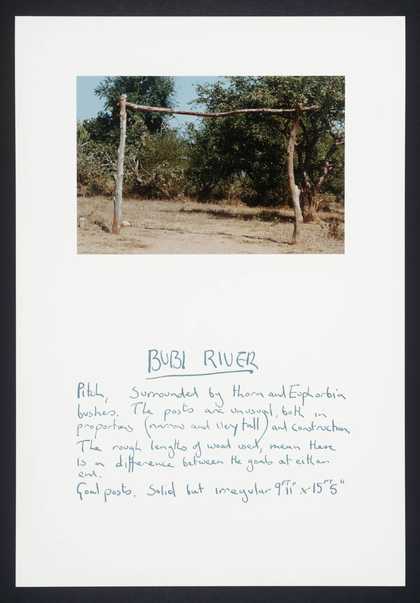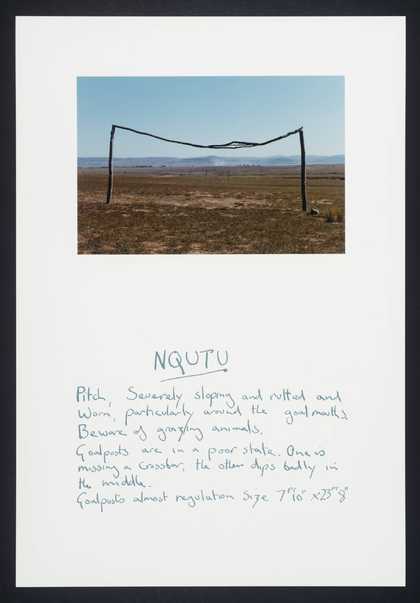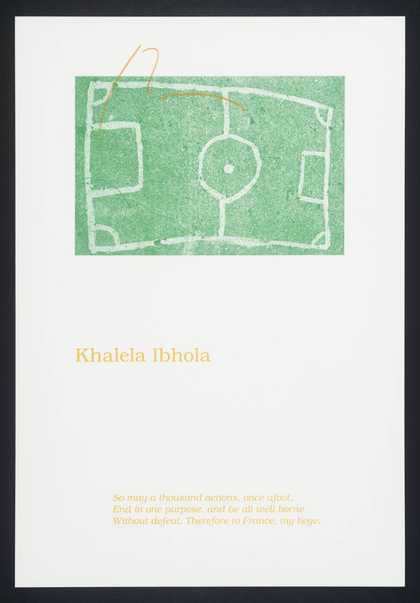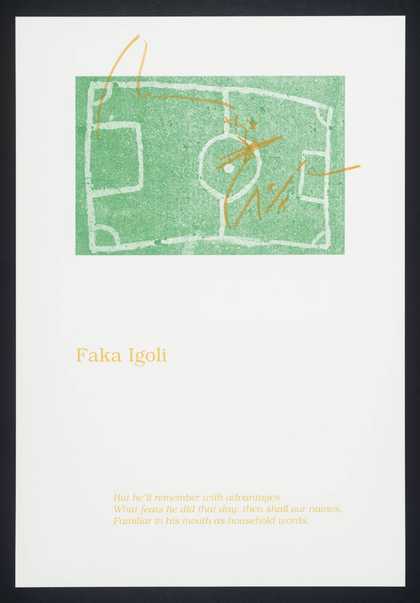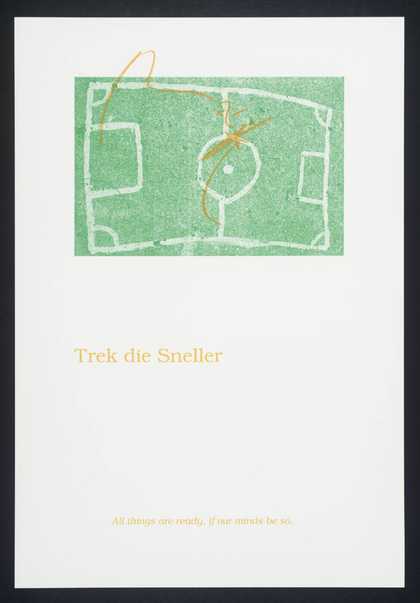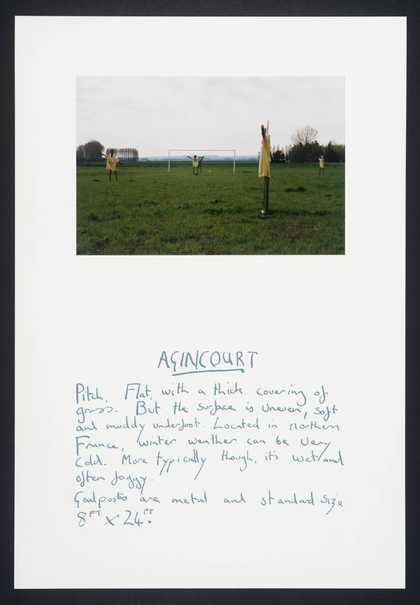M1: Hello, I’m Pat Nevin former Chelsea, Everton, Scotland and one or two other teams as well and I am here at the Olympic Park, the very noisy Olympic Park, to interview the artist in residence, Neville Gabie. Sport has been a big part of a lot of your work and certainly the one that I wanted particularly to talk about today was all the goalposts that you are taking a picture of and well, first of all, why goalposts.
M2: Well, having grown up in South Africa, I spent quite a lot of time there and I was really intrigued by finding these structures in the middle of the landscape and I studied sculpture and when I first saw them, I thought they were extraordinarily sculptural objects because to make a goalpost, you have to stand up in space and you have got to deal with gravity. You have got to then make a junction that in the top corner, so all those things are really sculptural and then I noticed that people were using whatever they found locally to do that, so there was some of stones, string, drainpipes and I thought that tapped back into sculpture in terms of being inventive with materials. So, originally I started taking them because I thought they were an extension of what I was interested in as a sculptor.
M1: Most of the work, if not all of the work, there is no people in it. It is very architectural but you know I looked at it and thought to myself, it doesn’t need people, you don’t need them because you can see the society from the goalposts and what they are made of.
M2: You couldn’t have articulated it better, Pat and it is about that, it’s about allowing people who look at the photographs to bring something of their own imagination to that relationship between the posts and their location.
M1: Modern football, extremely wealthy young men and most of your pictures there, it tells a different picture completely. Is that part of what you are trying to say? It is about society’s difference with football or sport and the disconnect.
M2: I think that is a very good question and you are absolutely right. Football has been out here as so elite and so exclusive in one sense and I am really interested in it that the way people connect with a very, very simple level. For me, what I really like about football is the successful on all sorts of level and although I have perhaps a slight different understanding of what I want people to see when I look at the photographs, I don’t mind what level people buy into that work and if it encourages people to go out and look and do their own things, fantastic.
M1: Goalposts have got one fantastic thing more than anything else, naturally they look like a frame.
M2: Absolutely, they work exactly like that in terms of the photographs and I felt it was really important to position myself relative to the goalposts where the penalty spot might have been, so it just operates like a frame and so no matter where the country, there was something which was absolutely identical in all of them. But you go to a city which you have never visited before with a view to taking photographs of goalposts. It becomes a really interesting way of beginning to understand a place, a city, a landscape, which you might never have encountered, you know, previously and I quite like that idea of this journey, this searching out for something.
M1: When you find that goalpost, is it like scoring a goal? [laughs]
M2: It is actually, sometimes you find things which you think, wow that is stunning. I mean what really surprises me, it is too verticals and a horizontal, but actually the creativity in how those are done, I am amazed that every time they are completely unique, they are really special and sometimes you will find one which you think, wow, I would never have thought of making a goalpost like that and it is that kind of moment, I suppose.
End of recording

